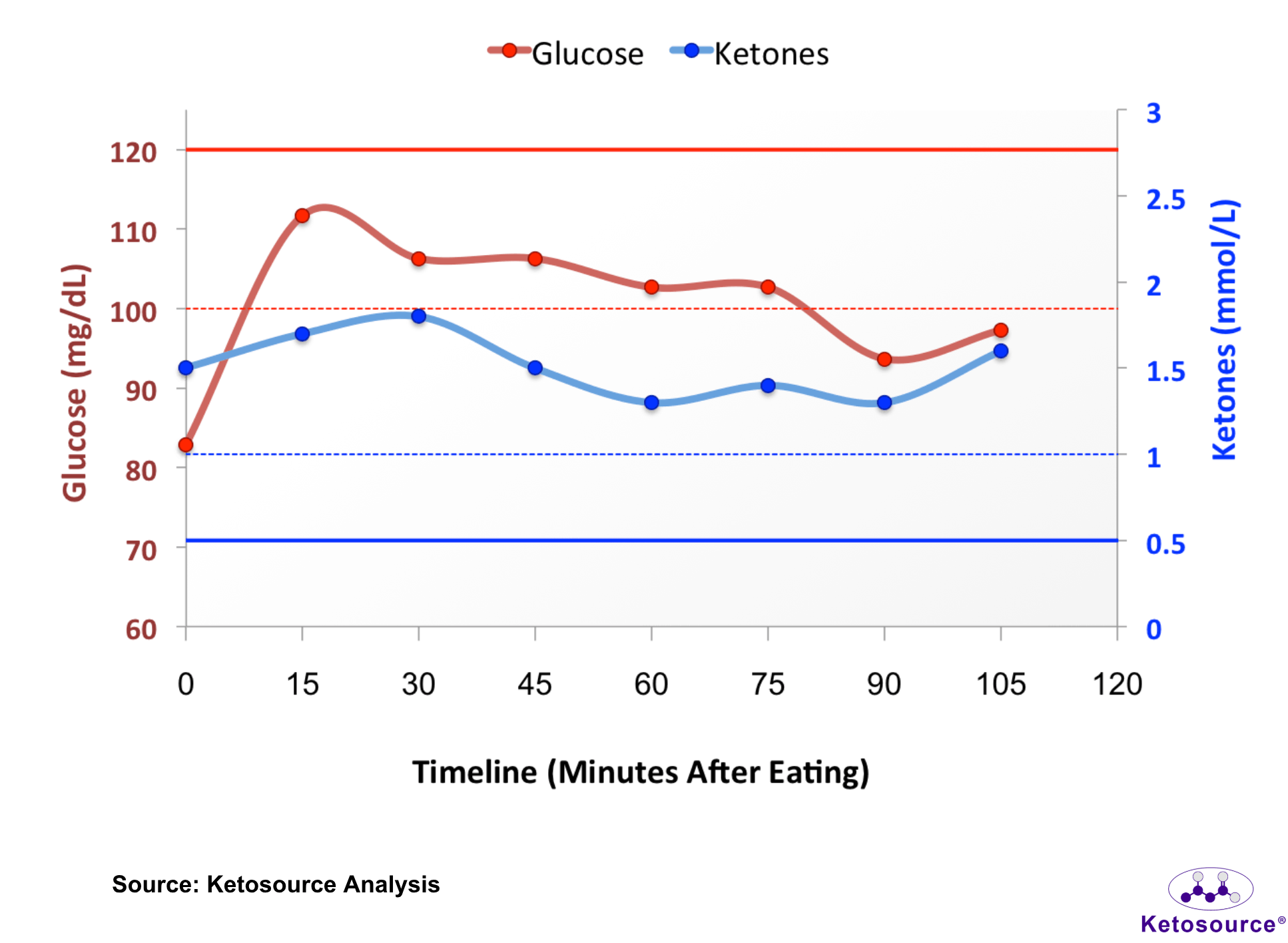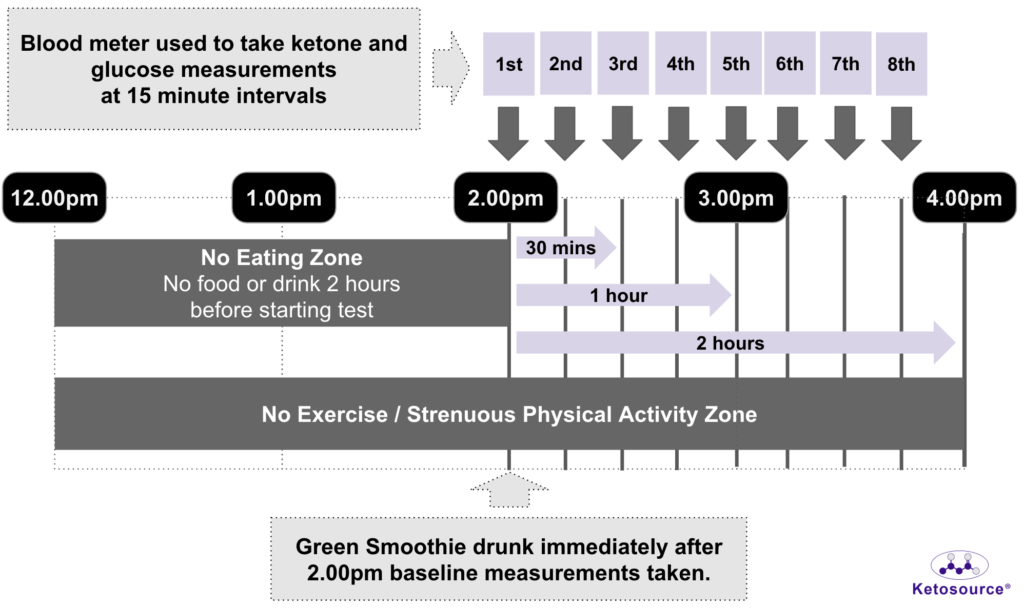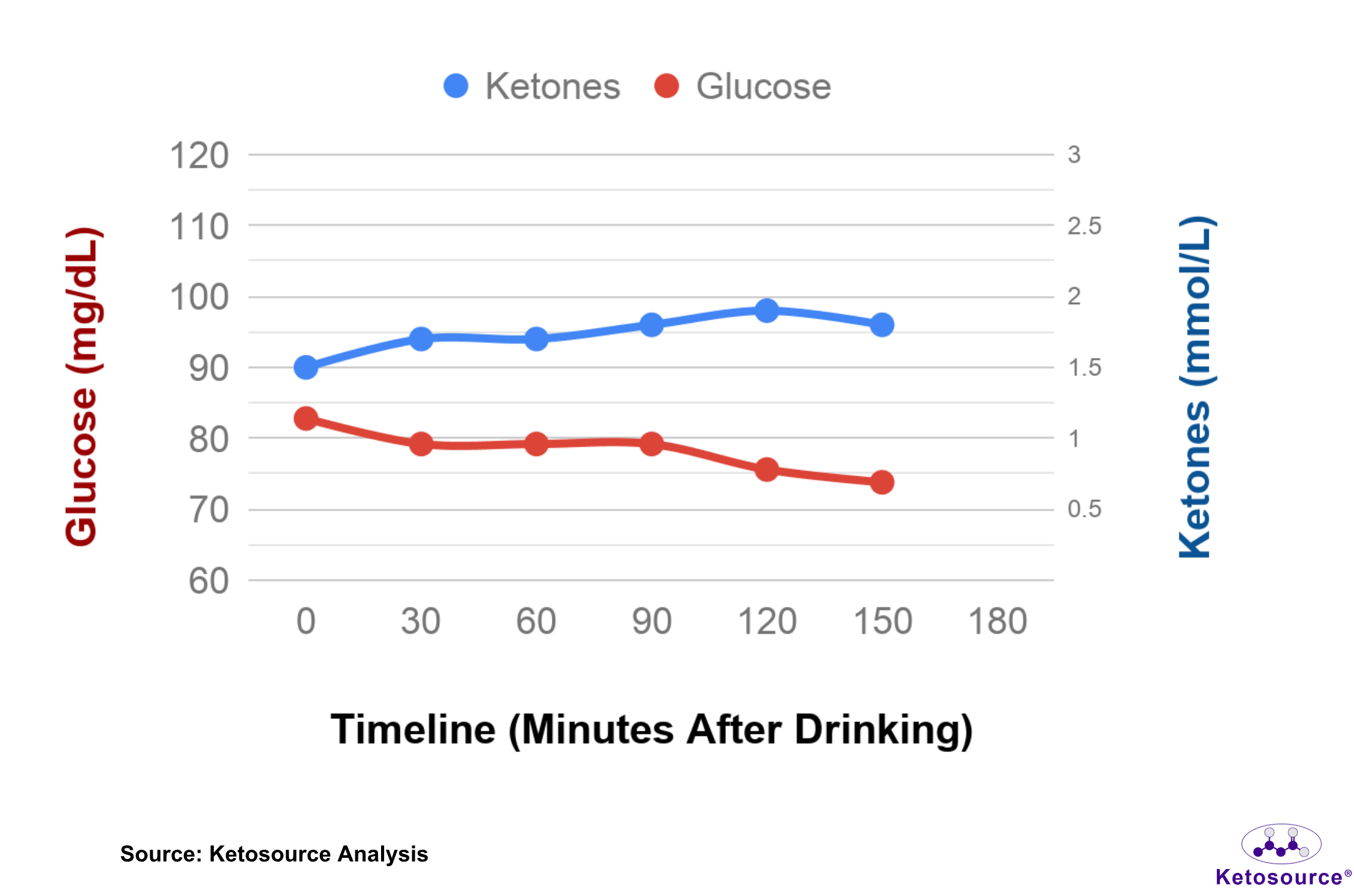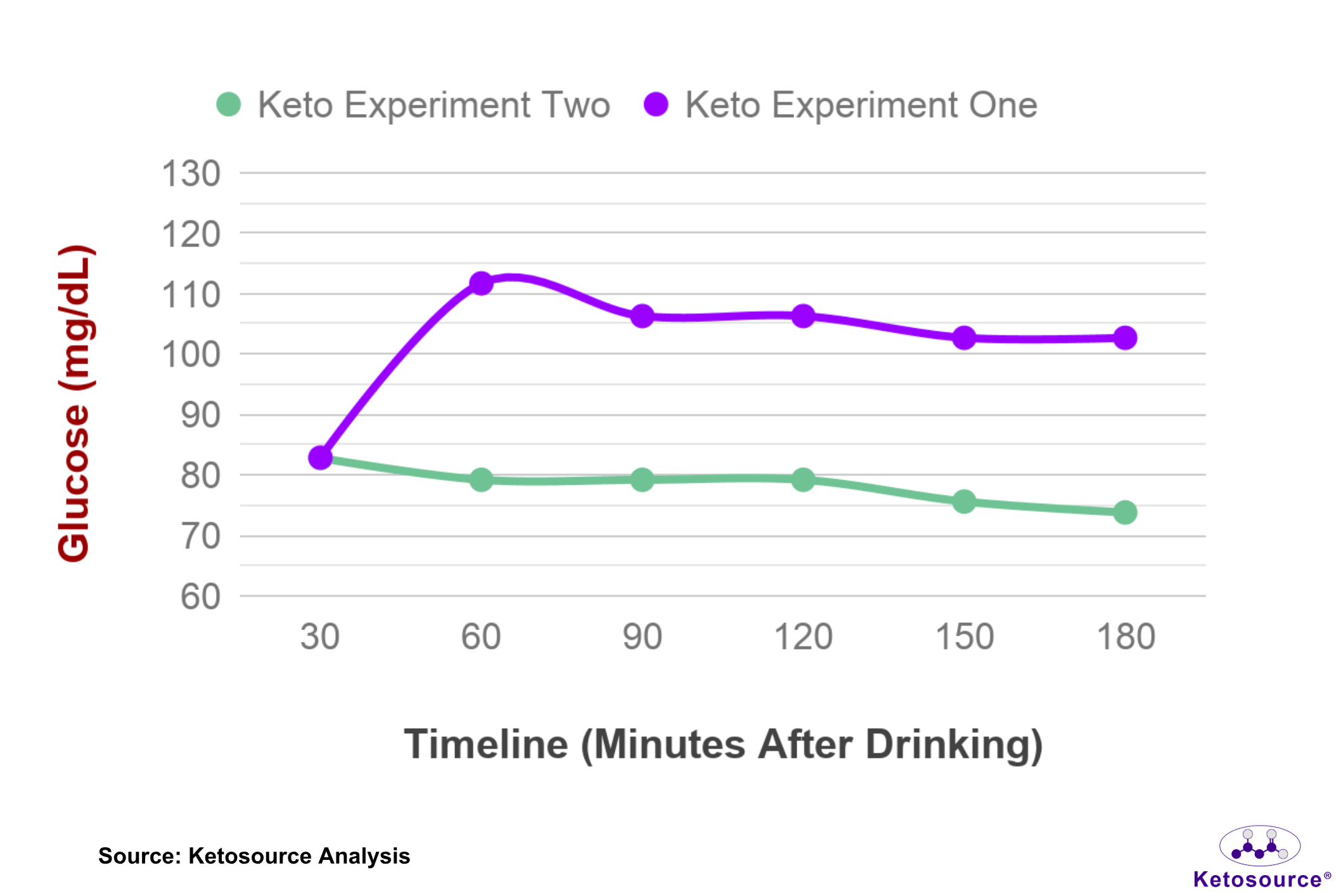Highlights: Jump to the part of this article you are most interested in with these links:
- Keto Experiment One: Why I Did It and The Results
- Keto Experiment Two: Why We Did A Second Experiment
- How the Experiments Were Run
- The Keto Experiment Results
- The Results Comparison
- Analysis: What Could Explain These Results?
- Validation and Next Steps
- Summary: The Takeaways
Keto Experiment One: Why I Did It and The Results
Before the first experiment, I had recently started to have a green smoothie daily as a convenient way to increase my intake of nutrient-dense foods[note]E Kennedy, P Racsa, G Dallal, A H Lichtenstein, J Goldberg, P Jacques, R Hyatt. (2008). Alternative approaches to the calculation of nutrient density. Nutr Rev., 66(12), 703-9.[/note].This was to increase my micronutrient intake specifically.
My assumption had been that it was ketogenic or keto friendly as I made sure to stick with green vegetables, unlimited on a ketogenic diet. Yet, after conducting tests on my blood ketones and glucose, I realized this wasn’t a very “safe” assumption.
In the first experiment, I engineered the green smoothie to be more ketogenic by adding fats to it and C8 MCT oil. The questions I had and where I thought I may have been wrong were:
- Can blending make ketogenic foods non-ketogenic?: I thought the greens and vegetables used wouldn’t affect ketosis eaten raw or cooked e.g. steamed. But what if I blended them and broke them down to drink?
- Does adding fat to a green smoothie make it more ketogenic?: Adding fat to a meal slows down its digestion and helps to reduce the glucose spike from a meal’s intake. As a result, it helps to make it more ketogenic. But this effect differs from person to person. Would it work with a green smoothie?
- Does adding C8 MCT oil offset any non-ketogenic effects of a green smoothie – keeping ketones stable?: The added C8 MCT oil would increase my blood ketones. But would it be sufficient to offset any reduction from the blended vegetables themselves?
I needed to answer these questions to know if the smoothie was helping or hindering my ketogenic diet. Then based on this, I would decide whether to continue it or not.
To find out if my modified green smoothie was interrupting my ketosis. Or supporting my ketogenic diet I ran a controlled experiment. I tested my blood glucose and blood ketones before, and for 2 hours after drinking the smoothie.
What Was Tested
For experiment one, I used a green smoothie that combined the following ingredients. I blended the following ingredients:
- Vegetables: One stick of Celery, a handful of lettuce and kale, half a red bell pepper, broccoli, mint and parsley
- Fats: Avocado oil, macadamia oil and butter
- Supplements: C8 MCT oil, Hydrolyzed collagen powder, CalMag (Calcium Magnesium) and Stevia
Keto Experiment One Results
The results were more extreme than I had expected for this experiment. Blood glucose rose by over 30mg/dl (1.7mmol/L) within 15 minutes of drinking the smoothie. And blood ketones dropped slightly by around 0.25 mmol/L over the experiment duration.
Figure 1: Experiment One – Blood Glucose and Ketone Readings for 2 Hours After Green Smoothie
For my personal goals, I aim to keep my blood ketones over 1 mmol (shown on the chart by the blue dotted line). This was achieved.
Another of my goals, which is usually relevant to staying in ketosis, is to keep my blood glucose under 120 mg/dl at all times – and as much as possible under 100 mg/dl.
In this experiment, the blood glucose shot up to 115 mg/dl, so didn’t surpass my hard ceiling of 120 mg/dl. But with such a rapid and strong rise it was not ideal (moving past the red dotted line on the chart).
Keto Experiment Two: Why We Did A Second Experiment
You may be asking, why did I do a second experiment?
Like any good experiment, the first green smoothie test led to more questions. Some of them were due to confounding factors, others were to clarify the results.
-
- Were all the ingredients ketogenic? The first reason for repeating the experiment was to take out the sweet bell pepper. I am no longer convinced this was a ‘ketogenic food’.
- Did my impaired gut health impact the results? Second, I was having issues with my gut health around the time of the experiment. The inflammation caused by pathogenic gut microbes can cause an increase in blood glucose levels [note]Cani, P.D., Osto, M., Geurts, L. and Everard, A (2012).Involvement of gut microbiota in the development of low-grade inflammation and type 2 diabetes associated with obesity. Gut Microbes3: 279-288.[/note]. [note]Lippert, K., et al. (2017).Gut microbiota dysbiosis associated with glucose metabolism disorders and the metabolic syndrome in older adults. Beneficial microbes8.4: 545-556.
[/note]. - Did the C8 MCT oil save me from dropping out of ketosis? Third, the C8 MCT oil I added to the smoothie may have affected the results. Likely it offset the glucose increase and helped maintain the blood ketone levels. To understand by how much more a green smoothie by itself would increase glucose and decrease ketones – we needed to test separately.
Lastly, the experiment wasn’t reproducible i.e the exact volume of each ingredient is vague. We cover what else can sabotage your results in our How and Why We do Keto Experiments article.
In the next experiment, I tried to eliminate these confounders and issues.
What Was Tested
For experiment two, I simplified the previous smoothie. I removed the ingredients that may have impacted the results, such as sweet bell peppers and C8 MCT oil and replaced the other ingredients with those commonly found in popular ‘keto’ green smoothie recipes:
-
-
- Vegetables: 200g spinach (organic), half a cucumber
- Fats: half a medium avocado, one tablespoon coconut oil
- Liquid and sweetener: 120ml unsweetened almond milk, 2 squirts stevia drops vanilla flavour
-
How Was The Experiment Run
How I Made it Valid
Figure 2: Overview of the Keto Experiment
The experiment was designed to remove ‘confounders’ that could render the results inaccurate. These are factors that could ‘bias’ the results and give an inaccurate conclusion. More on this and how to run a controlled experiment here.
To standardise the experiment I consumed both smoothies within 10 minutes. This is important as the time it takes to consume liquid food can affect glycaemic response – the blood glucose level[note]Brennan, C. S. (2005). Dietary fibre, glycaemic response, and diabetes. Mol Nutr Food Res., 49(7), 716.[/note].
The two main ‘confounders’ accounted for in the first experiment were:
1) Eating or drinking any other food around the same time
2) Any exercise or strenuous activity pre or post consumption
Both of these would interfere with the results. From 12pm (2 hours before the experiment), I made sure not to eat/ drink or doing anything strenuous through to 4pm (2 hours after drinking the smoothie) when the last blood readings were taken.
In the second experiment, I took readings every 30 minutes compared to every 15 minutes in experiment one. I took multiple measurements of glucose at each time point. double-check the readings for accuracy.
In experiment two I controlled for exercise and eating or drinking other foods. I measured my sleep and was in much better gut health than during the first experiment.
Keto Experiment Two Results
The results from the second experiment were completely different from the first experiment. Blood glucose dropped after drinking the simplified green smoothie. By the end of the experiment, glucose was down by over 10 mg/dl (0.6 mmol/L). Blood ketones increased by 0.3 mmol/L over the experiment duration.
Figure 2: Experiment Two – Blood Glucose and Ketone Readings for over 2 Hours After Green Smoothie

After the negative results of the first experiment. These positive results were very unexpected. I noticed that I felt more hunger after drinking it compare to experiment one. This lack of satiety may have an effect on what people eat later in the day.
The Results Comparison

Analysis: What Could Explain The Results?
We could just say the sweet bell pepper caused the glucose spike in experiment one and by removing it we no longer saw this spike in experiment two. But that may be overly simplistic.
More likely it was also due to a number of factors. The differences in gut health between the experiments may have played the biggest role.
Let’s assume for a minute that the sweet bell pepper was the glycaemic monster in the room. We would need to see if the pepper eaten with the same ingredients would cause the same result.
Is Blending or Juicing Anti-Keto?
Green vegetables are a mix of carbohydrates and fibres. When you blend them to create a smoothie it breaks down the vegetable structure. This makes them much easier and quicker to digest. This also increases the number of nutrients available for you to absorb[note]van het Hof, Karin H., et al. (1999) Influence of feeding different vegetables on plasma levels of carotenoids, folate and vitamin C. Effect of disruption of the vegetable matrix. British Journal of Nutrition, 82.3(2): 203-212.[/note].
But, physically disrupting fibre can affect how fast the sugar from carbohydrates enters the bloodstream. In other words, blending impacts their glycemic impact. This has been shown in apples[note]G B Haber, K W Heaton, D Murphy, L F Burroughs. (1977).Depletion and disruption of dietary fibre. Effects on satiety, plasma-glucose, and serum-insulin. Lancet. Oct 1;2(8040):679-82.[/note]. So you would presume it might happen in higher sugar vegetables. Such as sweet bell peppers.
However, breaking down the food matrix in some fruits and vegetables has less of an impact than others. For instance, freeze-dried mangoes do not seem to cause a higher blood sugar response than fresh mango[note]S F Evans, M Meister, M Mahmood, H Eldoumi, S Peterson, P Perkins-Veazie, S L Clarke, M Payton, B J Smith, E A Lucas. (2014).Mango supplementation improves blood glucose in obese individuals. Nutr Metab Insights. Aug 28;7:77-84.[/note].
So what? The easier carbohydrates are to digest, the quicker they get into the bloodstream. When a whole smoothie does this it can increase glucose all in one go.
Compare this to the green vegetables in their original form – where the gut will digest them and release the glucose slowly over many hours. As a result, the increase in blood glucose is hardly noticeable if at all.
So this result is most likely driven by the ‘blending’ of the food.
The other question this raises is whether liquid foods are always ‘less ketogenic’? Maybe not anti-ketogenic, but just less ketogenic.
Does Adding Fat to a Food Always Improve its Ketogenic Profile?
In research carried out in 2015 by Eran Segal’s team, they established that fats in food affect people differently in terms of how it ‘inhibits’ increases in glucose[note]Zeevi D, Segal E, (2015). Personalized Nutrition by Prediction of Glycemic Responses[/note]. (Note: I discussed this research and its implications with him in this Quantified Body podcast episode).
So it is likely that for some people (perhaps you) fat can reduce glucose increases considerably. In the extreme, some people can eat ice cream without large blood glucose spikes due to the high-fat content. The only way to know – is to test your own response.
I have run microbiome tests like DayTwo to better understand my own situation. But to be frank, they have not provided clarity on this topic. So I currently believe my response to fat – is moderate. It may inhibit blood glucose somewhat, but not as much as others.
So for now – this point is inconclusive. I don’t know if the fat helped.
C8 MCT Increases Ketones: Are These Ketone Results Positively Biased?
The C8 MCT oil consistently increases my blood ketones. I know this from many previous experiments where I’ve tested different doses of it.
So we know that it would increase my blood ketones. But how did it impact this green smoothie and experiment?
My assumptions are that it did the following:
- It increased my blood ketones within the first 30 minutes. This is the only explanation for the rise of around 0.25 mmol in that first half an hour.
- It likely offset some of the drop in my blood ketones. With an increase in blood glucose of 30mg/dl in that first 30 minutes, I would expect a significant drop in ketones – perhaps 1 mmol or more.
- Only a drop of 0.25 mmol from baseline ketones was seen. So my assumption is that the C8 MCT oil offset a lot of the drop in endogenous ketone production (the body’s own production of ketones).
In a way, I wish that I had not been adding ‘fat’ and ‘C8 MCT oil’ to my green smoothies. This would’ve helped me understand much clearer the impact of green smoothies on my ketogenic diet.
Satiety, does drinking a green smoothie make you more hungry?
According to the research, drinking calories leads to less satiety and fullness[note]M J Martens, MS Westerterp-Plantenga. (2012).Mode of consumption plays a role in alleviating hunger and thirst. Obesity (Silver Spring)., Mar;20(3):517-24.[/note]. Having the same meal blended also causes significantly less satiety and fullness
Liquid calories gulped down quickly can undermine our body’s ability to judge a healthy food intake[note]C de Graaf. (2011). Why liquid energy results in overconsumption. Proc Nutr Soc., 70(2), 162-70.[/note].
More greens = more fibre = more satiety. So would a green smoothie with more greens in it be more filling?[note]K Gustafsson, N G Asp, B Hagander, M Nyman.(1995).Satiety effects of spinach in mixed meals: comparison with other vegetables. Int J Food Sci Nutr., 46(4), 327-34.[/note]
According to the studies the thicker the smoothie the less hungry, you will be[note]R D Mattes, D Rothacker.(2001).Beverage viscosity is inversely related to postprandial hunger in humans. Physiol Behav., 74(4-5), 551-7.[/note]. So to reduce hunger after a green smoothie. Add a thickening ingredient such as ground flaxseed, coconut milk, or nut butter.
Validation and next steps
So what’s next? In future, these experiments will be run with more people to give a greater than N=1 result. The first green smoothie recipe should be used again but without the confounding sweet bell pepper or C8 MCT oil.
Summary: The Takeaways
- If you’re currently using smoothies as part of your ketogenic diet, it’s important to be aware of everything you’re putting in it, and whether it’s really ‘ketogenic’.
- The only way to know this for sure is to test your ketones after taking it.
- Everyone is different, so self-testing is the only way to know how your smoothies and specific ingredients are affecting you.
- Experiment one was not well controlled, as C8 MCT oil was used meaning ketones increased even when other foods were non-ketogenic.
- This is a good example of the importance of testing using a more rigorously controlled protocol to remove as many confounding variables as possible.
- A good rule of thumb would be to test the smoothie, and if it’s not ketogenic, remove ingredients that may be causing issues, as a way to ensure your smoothie is keto friendly.
- A good example from this experiment would have been removing sweet bell peppers and retesting the smoothie
- After this, you can begin to add in new foods and continue testing, in order to develop your perfect keto smoothie
- In order to run the best test possible on your smoothies, following our guidelines on ‘how to run a keto experiment’ will ensure the most reliable result possible